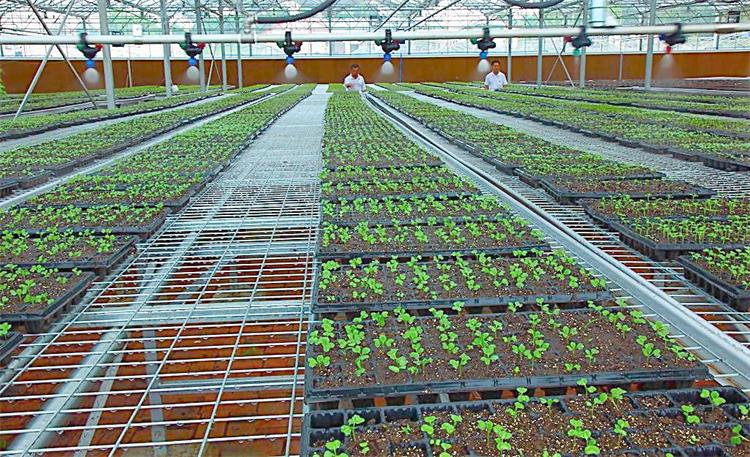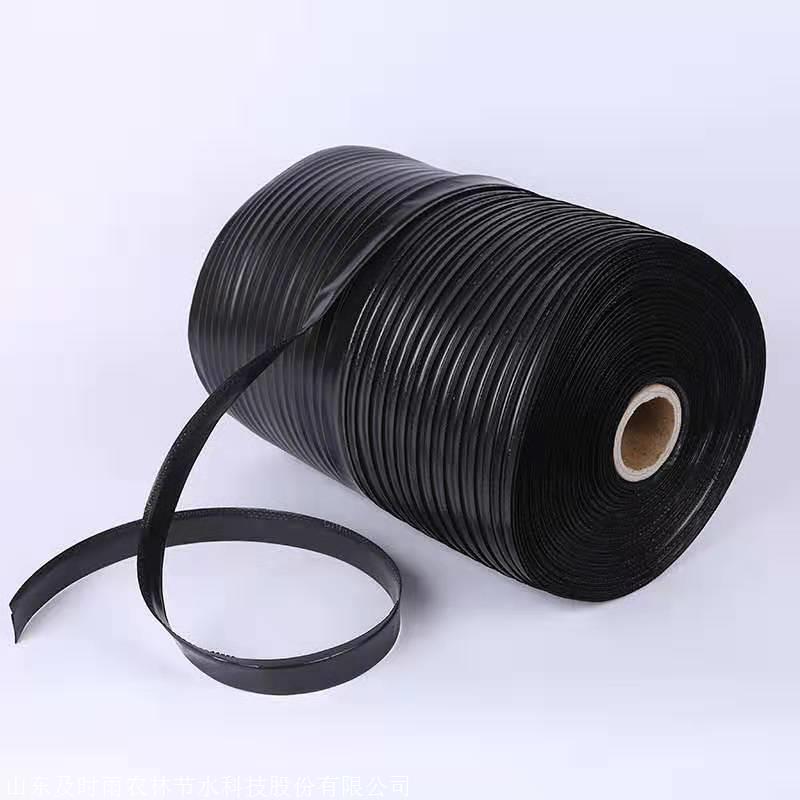Water-saving irrigation technology is widely promoted around the world and is very popular. Generally, sprinkler, drip irrigation and other facilities are used for irrigation, which can effectively avoid surface runoff and deep leakage losses and greatly improve water utilization. What is the difference between sprinkler irrigation and drip irrigation?

Sprinkler irrigation: Sprinkler irrigation is an irrigation method that pressurizes irrigation water through pipes and sprays the water onto the irrigated land from nozzles. Sprinkler irrigation is currently the most ideal irrigation method for field crops.
Drip irrigation: Drip irrigation is an irrigation method in which water with a certain pressure is filtered and slowly and evenly dripped into the soil near the roots of plants in the form of water droplets through the pipe network and outlet pipes (drip irrigation tapes) or drippers.
1. Scope of application of sprinkler irrigation and drip irrigation
(1) Sprinkler irrigation does not have high requirements for land leveling. Sprinkler irrigation can be used on gently sloping hills and uneven fields with complex terrain. Sprinkler irrigation can be used for field crops, fruits and vegetables, cash crops, fruit trees, pasture, etc. At the same time, irrigation can be used not only to irrigate crops, but also to spray fertilizers and pesticides, and to prevent frost and dry hot winds.
(2) Drip irrigation can be adapted to almost any complex terrain, and even trees planted on rocky beaches can be drip-irrigated. Drip irrigation has a low irrigation intensity and can adapt to clayey soils with low permeability. Moreover, due to the long irrigation time and frequent watering, it will not cause serious deep leakage even in sandy soils with high permeability. Under certain conditions, drip irrigation can also be adapted to brackish water irrigation.
A complete micro-sprinkler irrigation system usually also includes water source engineering, first hub, water transmission and distribution pipe network, micro-sprinklers, automatic control equipment, etc.:
(1) Water source project:For the micro-sprinkler system to operate normally, there must be sufficient water source security. Generally, water sources that can be used for micro-sprinkler irrigation include rivers, lakes, reservoirs, ponds, springs, well water or channel water. The function of the micro-sprinkler irrigation water source project is to provide sufficient water source for the normal operation of the micro-sprinkler irrigation system through the water source project, sedimentation and filtration. Since the water outlet diameter of the micro sprinkler head is smaller than that of the sprinkler irrigation system sprinkler head, the water source quality of the micro sprinkler irrigation system has higher requirements than that of the sprinkler irrigation system.
(2) First hub:Including water pumps, power machines, fertilizer and chemical injection equipment, filtration equipment, control valves, intake and exhaust valves, press flow measurement instruments, etc. Its function is to take water from the water source, pressurize it, process it into the water flow required by the compound micro-irrigation, and send it to the system.
( 3) Water transmission and distribution pipe network:The function of the water transmission and distribution pipe network is to loosely distribute the treated water from the first hub to each irrigation unit and emitter according to the requirements. The water transmission and distribution pipe network includes three-level pipes: main pipes, branch pipes and capillary pipes. The capillary pipe is the last level of pipe in the micro-irrigation system. The pipes installed on it are usually made of polyethylene pipes and are larger than or connected to the emitter. In sprinkler irrigation systems, polyvinyl chloride pipes are commonly used for pipes with a diameter smaller than or equal to the emitter.
( 4) Sprinkler: The sprinkler is the iconic equipment of the micro-irrigation system. Its main function is to spray the continuous water flow in the pipe into the air to form many small water droplets, which are sprinkled into the air or a certain range on the ground to replenish soil moisture. The basic requirements that the sprinkler head must meet are: it can turn the continuous water flow into fine water droplets or atomized water droplets; it can make the water droplets evenly spray into the air or a certain range on the ground to achieve a reasonable water distribution; it can spray onto the ground per unit time during irrigation. The amount of water adapts to the soil infiltration capacity and does not produce surface runoff.
The drip irrigation system mainly consists of three parts: water supply device, water pipeline and dripping soft belt.
(1) Water supply device: refers to the water source part, which is the head of the drip irrigation system. In many areas, the pressure boosting method is used, that is, after the water pump draws out the water from the well, it flows into a pressure medium with a capacity of 2-8 tons, and is pressurized to a pressure of 2-5 kilograms per square centimeter. Pressure Xiong’an has an automatic water supply device to ensure continuous and even water supply. If the conditions are not met, you can also use water storage tanks (iron buckets, water tanks, plastic buckets, cement tanks, etc.), place them at a height of 0.8-1.5 meters from the ground, and use micro water pumps to continuously pump the well water into the storage waters. However, This type of water supply is limited to small area applications.
(2) Water pipeline: Its function is to lead water under pressure to the irrigation area. It is divided into main pipes and branch pipes, with an inner diameter of 25 to 100 mm. Most of them use high-pressure polyethylene pipes or polyethylene pipes, and iron pipes are also used. (Preferably galvanized pipes). Bury the pipes 0.8-1 meter deep underground. Trunk and branch pipes with different inner diameters can be connected by two-way, three-way, four-way, bypass, etc. The inner diameter of the water outlet leading to Dayong is mostly 37.5—50 mm. On the water pipeline, it is best to install a wave filter with 80-100 mesh holes; Remove and clean once.
(3) Dropper soft tape: Polyethylene plastic film double-hole drip irrigation tape is currently commonly used in the water extraction part. It is processed into black to prevent green moss from growing in the tube and blocking the drip hole. Double upper holes are more resistant to sediment clogging than drip irrigation tapes with holes on both sides. The diameter of the drip irrigation belt is 16, 20, 25, 32, 40, 50 mm and other specifications. The distance between the drip holes on each side of the drip irrigation belt is about 25 cm. In vegetable production, drip irrigation belts with a diameter of 20-25 mm are generally used. When the pressure is 0.2-0.5 kilograms per square centimeter, the water output per meter of soft belt is 13.5-27 liters per hour.
(1) Disease prevention. Rice disease prevention mainly relies on two aspects: cultural measures and drug control. In terms of cultural measures, water-saving irrigation technology plays a certain role. Water-saving irrigation uses controlled irrigation to accumulate more dry matter in the plants and achieve a good degree of silicification. In addition, the plants The shape is upright and does not hang down, which can ensure photosynthesis. At the same time, the leaf tips spit out water every day, or on cloudy and rainy days, dew drops do not exist on the leaves. Keeping the humidity below 98% is easy for the disease to occur, which plays a great role in fighting the disease.
(2) Insect prevention . Water-saving irrigation increases the degree of siliceousization of plants (that is, leaves). The degree of siliceousization is enhanced, and the rice is relatively hard and cannot be eaten by insects. And through intermittent water-saving irrigation, the growth structure of the entire population is controlled, making the rice grow more rationally. At the same time, controlled irrigation is used to control the rice, mainly its root system, because after controlled irrigation, the root system takes root deeper and deeper as the water moves downward. Can effectively prevent and control lodging. And the entire rice plant shape is uniform, the ears are also the same size, and the overall growth is relatively average.
(3) Increase income and save energy . ①In terms of increasing production and income, rice fields can basically increase production and income by about 5%-8% through the use of water control technology. After using (water-saving) irrigation, its ear shape is basically the same, and the time for ear emergence is relatively concentrated, and there are no ineffective tillers. Its quality is improved, and the rice yield rate is about 0.5 higher than that of ordinary (irrigation). . ②In terms of energy saving, using water-saving irrigation for rice can save at least 100 cubic meters of water per acre.



